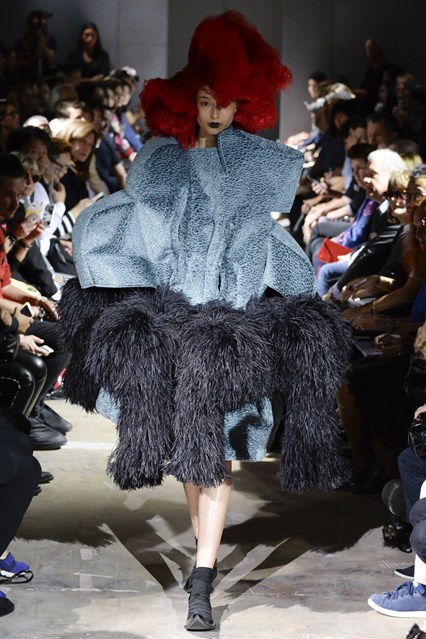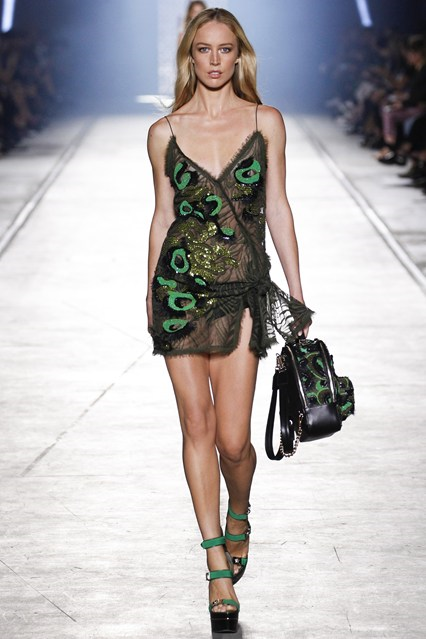Text by Adam Lehrer
So, New York Fashion Week: Men’s has begun for the FW 2016 season. The story with New York will always be that the designers that show in New York are far too market-driven in comparison with the brands that come out of London and Paris. It does often seem that brands here are far too worried about ending up on the racks of Nordstrom to really make anything close to being considered art, but then again you’d also not really be looking hard enough. The menswear scene in New York is huge: we love clothes here! Dudes here are as focused on style and willing to take risks on new styles perhaps more than any city in the world. From Supreme to high fashion to the best vintage stores in the world, guys in New York use all manner of garments to express that thing that they are trying to express.
The designer schedule for FW 2016, while slim in comparison with those in Milan, London, and Paris, is looking fairly strong. Italo Zuchelli, perhaps the greatest minimalist menswear designer in the world, will host a Calvin Klein presentation here. Few menswear designs on Earth are as conceptually strange, artisinally gifted, and rarified as those by Greg Lauren (whose show we will be attending). Plus, there are a range of new designers defining a new high fashion scene in Los Angeles, including Rochambeau and Second/Layer, that are calling New York their home.
The concepts are there, it’s just you have to sift through a lot of overly commercial monotonous mediocrities to find the good stuff. NYFW:M started today with New York Men’s Day, platform presentations of eight new brands. So much of what makes fashion amazing is seeing the clothes move with human bodies (Craig Green exemplifies this), and it can be difficult to hold a cohesive concept without the splash of a catwalk. But the designers at NYMD did their damndest to try. Some of the clothes were dull. Some were actually quite amazing. Here were some of the best.
Best:
Edmund Ooi FW 2016
In our review of his SS 2016 runway show, we discussed Malaysian designer Ooi’s refreshing emphasis on concept but lamented his inability to render them into wearable clothing. He heard our cries with FW2016; a striking balance between futuristic high fashion and utilitarian workwear. The coats, which ranged from belted trench coats to quilted bomber jackets, came layered with high treated t-shirts, neck jewelry, and awesome blue leather gloves. Perhaps the most surprising aspect of the presentation were the spectacular cropped skinny denim; Ooi using denim is sort of like Ralph Lauren using latex. The collection felt very Raf, perhaps too much so. It’s probably on the fault of the viewer to relate anything youthful and confrontational to Raf, but the influence felt very evident here. And I’d still rather wear Raf. But nevertheless, very nice clothes.
Plac FW 2016
While certainly not approaching anything resembling high fashion, New York-based PLAC has found some footing under Korean creative director Sang-Hyun Lee. The knits and scarves were massive and draped over the models, creating an easy evocative look.
David Hart FW 2016
I actually was thinking the other night, why is it that when designers reference music is it always punk (Raf), rave culture (Liam Hodges), or hip-hop (Astrid Anderson). Why not one one of the most stylish of all musical genres, Jazz? While New York designer David Hart, who has worked for Tommy Hilfiger and Ralph, might not be the most conceptually brilliant designer out there, his FW 2016 presentation at NYMD answered my call. His presentation room, set to a soundtrack of A Tribe Called Quest, recreated the atmosphere of Claude McKay’s Home to Harlem, if in a slightly too obvious manner. Nevertheless, the all black cast and understated high luxury made for a groovy atmosphere and some very desirably tailored clothing.
Robert James FW 2016
“As a New York designer, I’m very conscious of not making anything related to Americana or workwear. I want to make real, luxury designer clothing,” said designer Robert James to me at his FW 2016 collection. The aim is admirable. James isn’t overly concerned with concepts, he pretty much always works in the sphere of refernces to rock n’ roll (this time the opulent dressing of 1970s rock bands), but he is an exquisitely skilled tailor and the clothes here were perfectly fitted and befitting of high price tags.
CWST FW 2016
I’ve never been one to think of dope smoking (and growing) tree huggers as the most stylish people around, but Californian brand CWST had me re-thinking that sentiment with their campfire celebrating FW 2016 presentation. For the presentation, the brand created a field of marijuana and had a campfire acoustic guitar player wheeling through the soundtrack. On top of that, the clothes were pretty amazing, turning hippie staples like drugrugs and knitted pants look like the most desirable products on Earth. There is something refreshingly unique about this brand, taking inspiration from their home state and then letting that inspiration ripple through the snooty fashion world. Never change, CWST.
Chapter FW 2016
I actually quite like Chapter and own some of their knits and pants (they actually make some really cool looking trousers), but they do seem to offer a more accessibly price but still well-made versions of the types of designers that sell their clothes at Totokaelo. But their FW 2016 presentation was fantastic, seeming to imagine the bad boy vampires of The Lost Boys at a John Coltrane concert (there was a live jazz band for the soundtrack). The designers of Chapter have a real knack for shape, taking things like minimal bomber jackets and trench coats and then just flaring it at the arm or the seems and making it look really cool. Chapter also offered the brand’s first pairs of denim, which we cropped, slashed, and drop-crotched, giving that girlfriend jean vibe to dudes, which didn’t look bad even if won’t get me to ditch my Levi’s anytime soon. Chapter really is a great brand though, especially if you are a guy who wants to wear things like Margiela and Lanvin but can’t come close to affording it.
See more fashion coverage here.






































